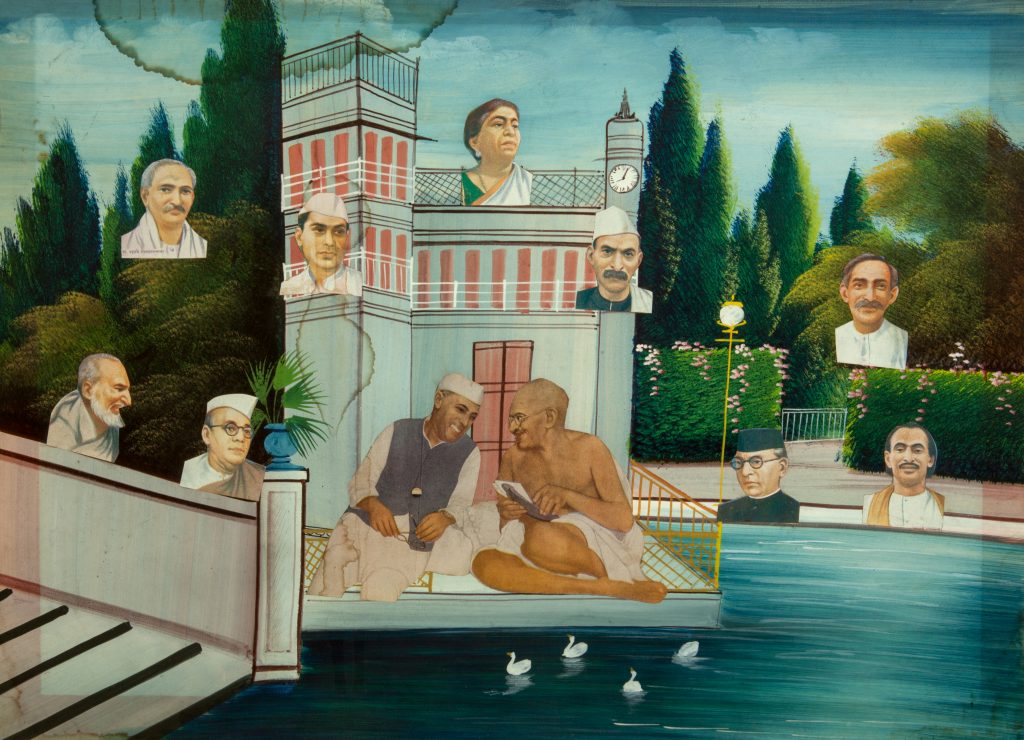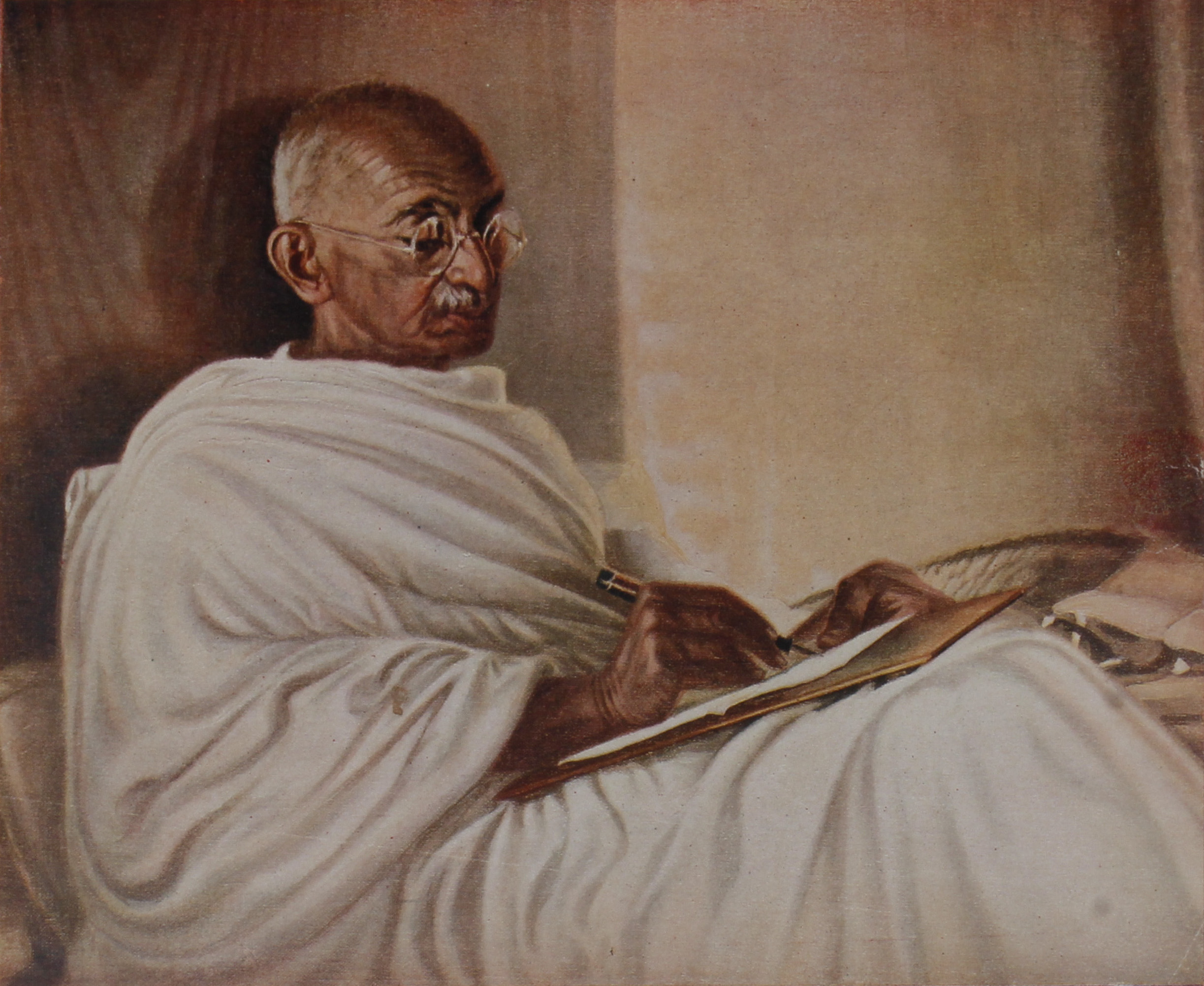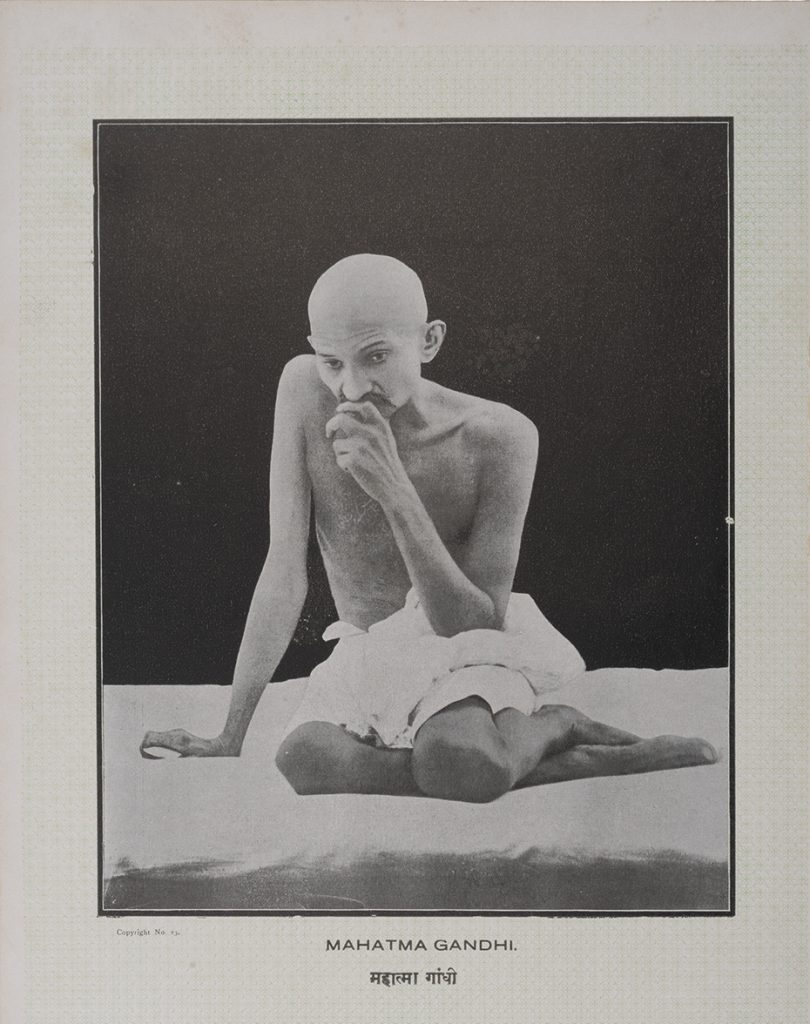Blogs
Gandhi, the Muse of Indian Art
Khushi Bansal
Gandhi has been the muse of Indian artists for the better half of seven decades. Here’s looking at the different ways in which Indian artists have paid homage to the icon of the India’s Independence Movement.
“As an artist, whenever I looked at Gandhi’s photographs, I felt that he was approachable and understood the feelings of common people. As I reflected on him, I began to feel he was India’s first conceptual artist, who used various ways to convey his message and reach out to people — look at the sheer act of picking salt at Dandi. Aesthetically, he began to encourage me.” – Atul Dodiya. (Dodiya 2019)
Mohandas Karamchand Gandhi, or Bapu, as Indians fondly remember him, was the father of the nation. Born in 1869 in Porbandar, Gujarat, Gandhiji moved to South Africa in 1893 to pursue a career in law. He continued to live in South Africa for 21 years, and during this time, he developed his political views and ethical boundaries. Not only has Gandhi been a central subject to the work of Indian artists, but he has also become a pivotal figure to the South African art and culture scene. His life and work have been featured in a series of exhibitions across South Africa, including the Soul Mates curated by Prashant Kidambi and a featured exhibition at the Constitution Hill Museum, the former prison of Gandhi.

Freedom Fighters of India by an Unknown Maker, c.1930s, Chromolithograph print cut-outs on painted backdrop, POP.00022
Gandhi has been the muse of Indian artists for the better half of seven decades. For his 150th birth anniversary, Indian artists paid homage to the icon of the Indian Independence Movement by dedicating the Indian Pavilion at the 2019 Venice Biennale to him Our Time for a Future Caring. The exhibition brought together the work of eight artists, all from different generations, who reflected on the impact of Gandhian teachings on them as they explored the various aspects of decolonisation.
The show opened with a work from the year 1939 – Nandalal Bose’s Haripura Panels that was commissioned by Gandhi in 1938. The series depicts people from various backgrounds doing their everyday jobs ranging from women pounding rice to farmers in the paddy fields of India. By using natural pigments that were extracted from vegetables and stone, and the panels that were made from cotton and bamboo, Bose was able to create a sense of resistance against the British (by focusing on goods produced in India – propagating Gandhi’s ideology). Throughout his career, Bose painted multiple representations of Gandhi, the most popular one being Gandhi on the Dandi March, holding his staff.
On the opposite side of Bose’s series at the Biennale was Jitish Kallat’s Covering Letter (2012), a dark, evocative and immersive room consisting of a single letter written by Gandhi. In July 1939, five weeks before the start of World War II, Gandhiji wrote a letter to Adolf Hitler requesting him to “save the world from a savage state” (MCA Australia and Kallat 2016). The exhibit is a moment of self-reflection, a space between one of the biggest propagators of peace (Gandhi) and a man of brutality and violence (Hitler). This particular exhibit reinstates Gandhi’s views on peace and brutality.

Calendar for the year 1947 depicting Mahatma Gandhiji by Chimanlal Chhotalal & Co., c. early 20th century, Print on paper, POP.10308
Reinstating Gandhi’s views on violence, Mumbai-based artist Atul Dodiya was inspired by the Godhra riots. On visiting Gandhi’s birthplace, Dodiya noticed how all of Gandhi’s belongings were kept in slanting cabinets to keep the birds away. Dodiya created eight cabinets, each with an image of a bird above it, which symbolises purity and the need to be gentle at a time of great political unrest.
Gandhi was a fierce believer in community and people coming together. G.R. Iranna nailed hundreds of wooden slippers on a wall to create Naavu, which literally translates to ‘we together’. Symbolising the iconic Dandi March, all the slippers were acquired from different parts of India, creating a sense of diversity. Each exhibit at the 2019 Venice Biennale emphasised the various ideals and principles of Gandhi, and the ways in which artists have paid tribute to him over the years, making it perhaps one of the most seminal shows solely dedicated to the significant and much revered figure in our nation’s history.
A series of posters depicting the Gandhian ideal are housed in the archives of MAP. An important one (and one of my personal favourites) is the poster titled Mahatma Gandhi dated to the 1930s by the Shyam Sundar Lal Picture Movement. Gandhi is depicted seated with his legs crossed, looking extremely pensive. Given that the Indian resistance was at its peak in the 1930s, this black and white image is stoic and serene, as if almost signifying the calm before the storm.

Poster Titled ‘Mahatma Gandhi’ by Shyam Sunder Lal Picture Merchant, c. 1930s, Lithograph, POP.04973
The father of the nation was a central figure in the iconography of the Indian Independence movement, and India’s struggle for freedom. As a result, a large number of films, posters, calendar prints, photographs, and exhibitions have been inspired by the life and work of Gandhi. He has been worshipped and revered, and even faulted and criticised, by many artists across India, and continues to be a man of significant relevance to the artistic and collective narratives of India today.
To know more about Gandhi’s representation in Indian art, view MAP’s exhibition Making the Mahatma: Building and Capturing a Nation’s Imagination here.
A recent graduate from Central Saint Martins, London, Khushi Bansal is an aspiring curator with a keen interest in baking a perfect loaf of bread.
Bibliography:
Dodiya, Atul. 2019. “Why Mahatma Gandhi was India’s first conceptual artist.” Indian Express. https://indianexpress.com/article/express-sunday-eye/he-was-indias-first-conceptual-artist-6034869/.
MCA Australia and Jitish Kallat. 2016. “Jitish Kallat – Covering Letter 2012 (extended interview).” YouTube. Video. https://www.youtube.com/watch?v=mKL8iytpFps.








